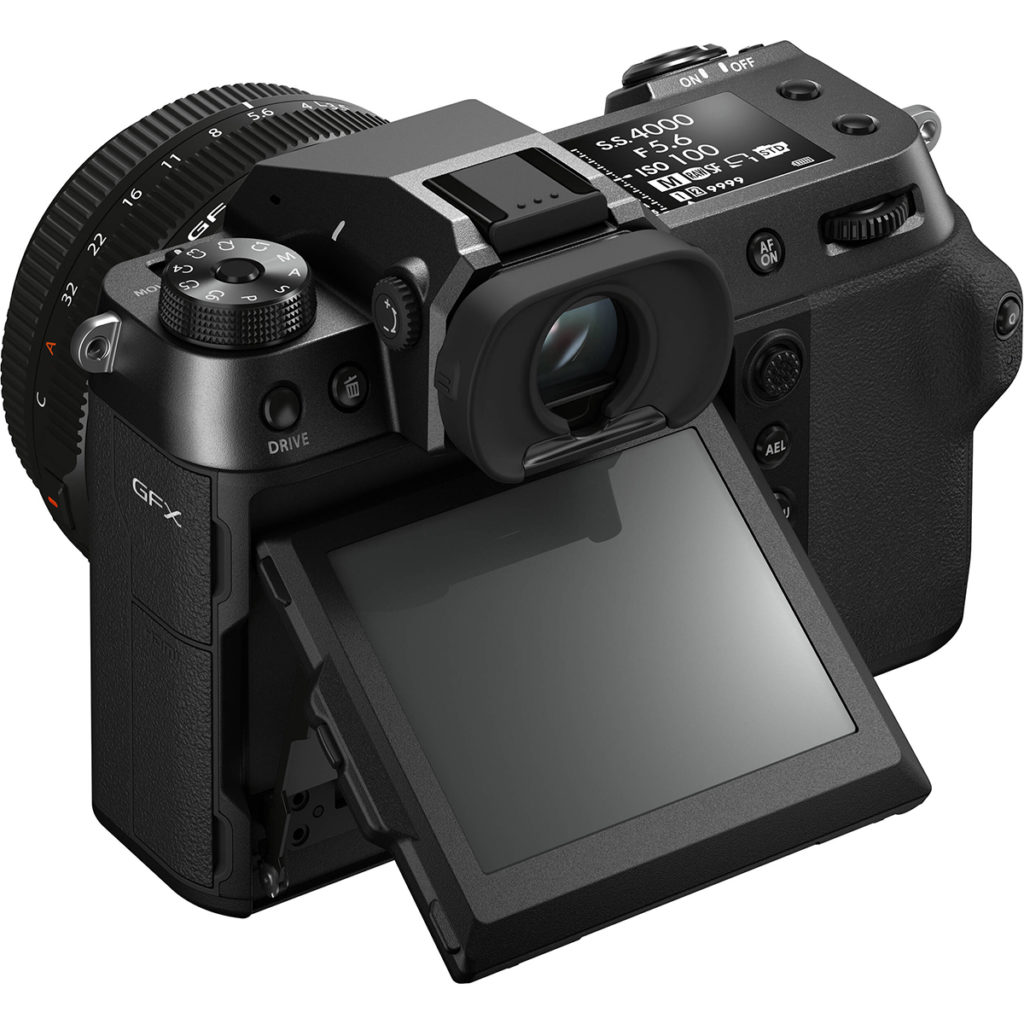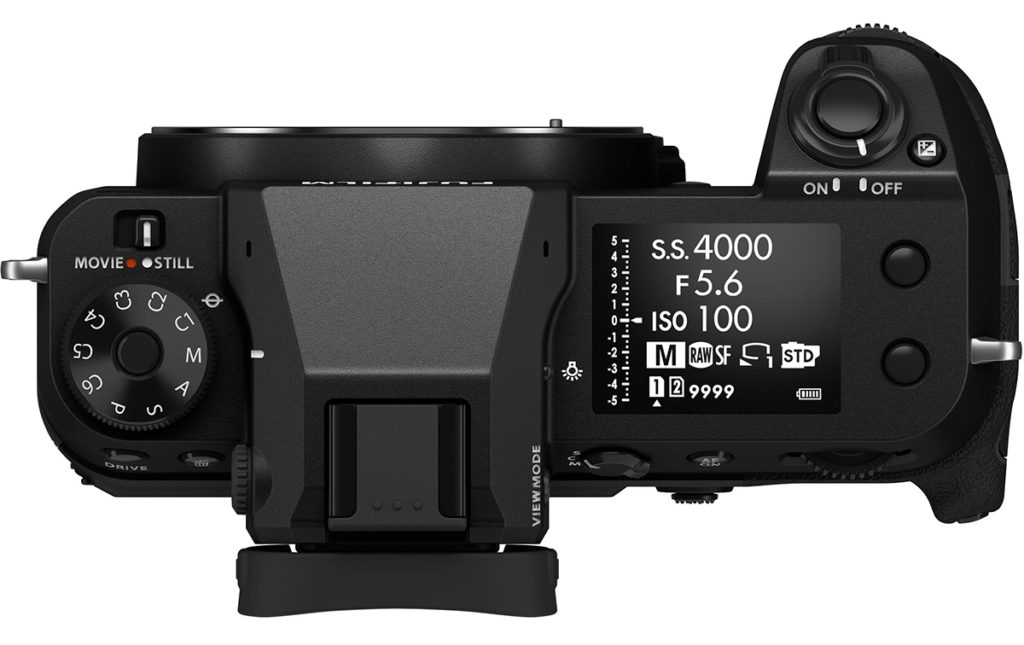102 Seductive Megapixels
Review by Steve Baczewski
FUJIFILM Corporation is well-known for its APS-C format cameras but, in a strategic move, they decided to pass on manufacturing the already well-populated, full-frame camera market in favor of the less popular, more expensive, medium-format camera. I recently had the opportunity to use the company’s fourth medium-format camera, the 102-megapixel FUJIFILM GFX 100S. The relatively inexpensive ($5,999), mirrorless, GFX 100S uses the same BSI 43.8×32.9mm CMOS sensor as the company’s two-year old GFX 100. This new camera body is $4,000 dollars cheaper, weighs less, is much more compact, and looks and handles more like a full-frame camera. It’s a new generation of medium format and it’s impressive.
The magnesium alloy, weather-resistant, black body has a deep-textured grip that works well to balance FUJIFILM’s larger lenses. It houses two SD card slots and a single battery that’s good for 400 to 500 exposures. The PASM mode dial at the top left has six custom settings, and at the top right is a 1.8″ LCD screen that alternatively displays your image settings, a virtual ISO and shutter dial, or a histogram. The body’s numerous buttons and dials can be customized to taste, plus there’s a “Q” button to quickly display and access a menu of up to 16 adjustable settings of your choice. The ISO range is 100–12,800, expandable to 50 and 102,400. Noise is noticeable at ISO 3,200, but cleans up well in post. Of note is that, separate from the bulb setting, you can dial in a shutter speed of up to 60 minutes.

The CMOS sensor is covered with fast phase detection points and is quick to focus in single-shot mode, including low-light situations. The sensor is supported by the best 5-axis IBIS (in-body image stabilization) that I’ve used, and it enables hand-holding with tack-sharp results down to 1/15th of a second. This is a luxury for landscape, architectural, or portrait photographers. The GFX 100S can capture 5 fps in burst mode, good for capturing changing expressions in portraits, but not particularly good for focus tracking fast-moving subjects such as the quick movements of an animal, so it isn’t a good choice for sports or wildlife photographers.
I shot mostly in RAW, but the JPEG’s color and dynamic range are simply the best I’ve seen. The camera can capture in either 14- or 16-bit RAW; however, 16-bit files weigh in at more than 200 MB, and I didn’t see a significant difference to warrant the 16-bit setting.
FUJIFILM has 12 medium-format lenses available, both primes and zooms. They’re uniformly well-designed and sharp, but most of them cost more than $2,000—a consideration when building a camera system.
A word about post: I’m using Apple’s M1 mini, and was surprised and pleased that there was no bottlenecking in either Photoshop or Lightroom. Workflow moved along smoothly. Working with the GFX 100S files is a revelation: The ability to crop and find another composition within your file without a loss in quality gives the medium-format a flexibility and a creative license not so easily found. There’s so much information in the files that slight slider adjustments reveal a wide range of colors and highlight/shadow detail. The dynamic range is extraordinary and practically eliminates the need for bracketing exposures.

I found composing with the 100S more deliberate and unhurried. I enjoyed composing with both the EVF and articulated, rear touchscreen LCD. While the EVF has been downsized from the original GFX 100’s 5.76 million dots to 3.69 million dots, it’s still large and bright, with easy-to-read shooting data and a realistic concession to make the camera affordable. The articulating 3.2″, 2.36 million dot resolution LCD holds up well in daylight; however FUJIFILM’s LCD touch-screen technology hasn’t evolved, and is too limited to basics such as moving the focus point. Navigating the menus by touch would be nice.
I carried the GFX 100S all day hiking and street-shooting, and it reinforced my original thought that the handling of the camera is indistinguishable from a full-frame camera. In the digital evolution, certain cameras serve as a reference point in file quality and technology: The FUJIFILM GFX 100S is one of those cameras! ■






